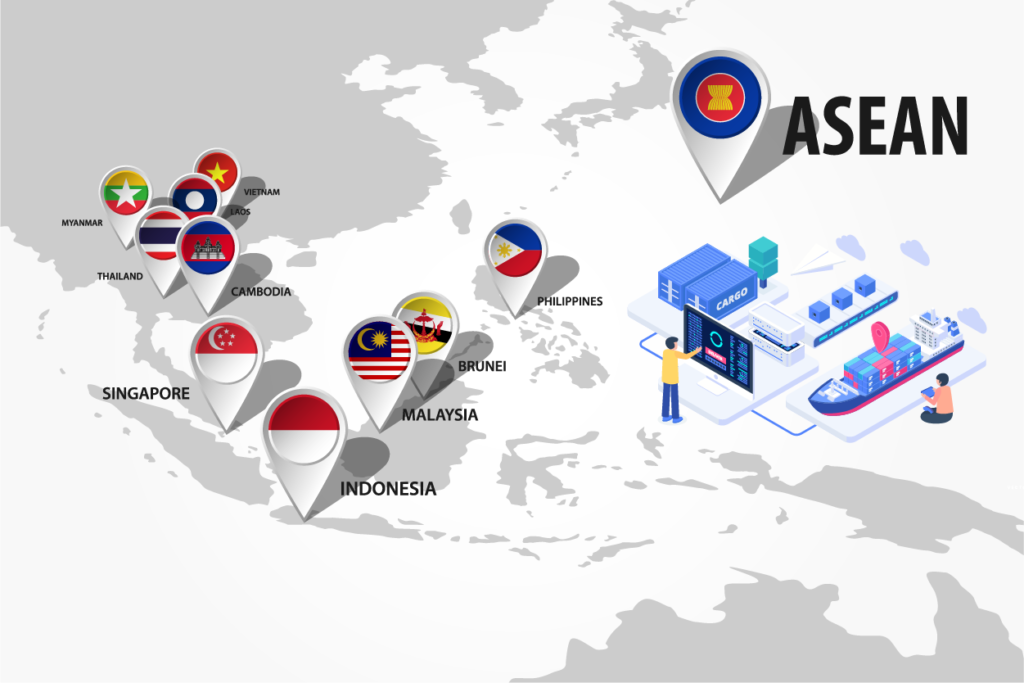
Diversifying risk while managing complexity
Companies seeking to diversify their risk have been considering a China +1 diversification strategy, which would have them relocating parts of their manufacturing and supply chains. This, however, requires organizations to evaluate the direct costs of relocation and manufacturing, and a “total supply chain cost.” They would also need to evaluate the strengths and weaknesses of setting up operations within a destination country or region. As we look forward, one thing is clear; the factory ecosystem and associated supply chain will be increasingly complex.
This diversification will increase the complexity of managing multiple locations with ecosystems that need a network of providers to supply raw materials, services, talent, infrastructure, and regulatory frameworks at a competitive level. IT must take complex data and provide decision support or autonomy across these local “micro- chains” and ensure accuracy and agility. In the supply chain, this translates into systems and platforms that offer new levels of supply chain visibility and integration with partners. With this framework in place, manufacturers can respond rapidly to new challenges and opportunities.
Guidance for enabling a diversified supply chain
When considering where to set up operations, companies should contemplate the following areas
Sumitomo Rubber Industries is one company that has benefited from expanding its supply chain into ASEAN. The company is a beneficiary of the Japanese government’s JETRO funding to move production lines out of China into Malaysia. Sumitomo’s diversification into Malaysia allowed it to take advantage of the country’s robust tire and rubber supply and distribution ecosystem to support its nitrile rubber gloves manufacturing. The glove manufacturer has joined the 1,500 Japanese companies Malaysia, which extend local knowledge support to their compatriots.
Another Japanese company that has benefited from the healthy ASEAN supply chain ecosystem is Sanko Precision Co., Ltd. Local partners in the Indonesian precision progressive press die manufacturing and precision metal parts processing assisted with technical tie-ups as well as practical considerations within the local market.
As these two examples show, the strong ASEAN supply chain and partner ecosystem has much to offer manufacturers. It is crucial for companies to evaluate the strength of its partners and the destination country business ecosystem as they seek to increase supply chain resilience in the wake of US/China trade tensions and COVID-19.
Nguồn: https://blogs.3ds.com/
Tác giả: admin_imalog
Ý kiến bạn đọc
Những tin mới hơn
Những tin cũ hơn
Thứ tư - 31/12/2025 16:12
Thứ sáu - 26/12/2025 17:12
Thứ sáu - 26/12/2025 14:12
Thứ năm - 25/12/2025 16:12
Thứ hai - 22/12/2025 18:12
Thứ hai - 22/12/2025 17:12
Thứ hai - 22/12/2025 16:12
Thứ tư - 17/12/2025 16:12
Thứ tư - 17/12/2025 14:12
Chương trình Tuyển dụng & Đào tạo Đặc biệt dành cho Sinh viên từ trường Đại học Bình Dương Các bài báo khoa học được công bố trên tạp chí Quốc Tế (08/2012)
Các bài báo khoa học được công bố trên tạp chí Quốc Tế (08/2012)
 Học bổng tân sinh viên Trường Đại học Bình Dương năm 2021
Học bổng tân sinh viên Trường Đại học Bình Dương năm 2021
 Sơ đồ CTĐT
Sơ đồ CTĐT
 03 lí do bạn nên học ngành Logistics & Quản lý chuỗi cung ứng tại BDU
03 lí do bạn nên học ngành Logistics & Quản lý chuỗi cung ứng tại BDU
 Thư mời tham dự Triển lãm về Logistics Việt Nam 2023
Thư mời tham dự Triển lãm về Logistics Việt Nam 2023
 VIỆN QUẢN TRỊ CÔNG NGHIỆP & LOGISITCS (IMALOG) THAM GIA TRIỂN LÃM QUỐC TẾ LOGISTICS- VILOG 2023
VIỆN QUẢN TRỊ CÔNG NGHIỆP & LOGISITCS (IMALOG) THAM GIA TRIỂN LÃM QUỐC TẾ LOGISTICS- VILOG 2023
 Thông báo tổ chức “Tuần sinh hoạt công dân - sinh viên” năm học 2023-2024
Thông báo tổ chức “Tuần sinh hoạt công dân - sinh viên” năm học 2023-2024
 Học bổng Hubert H. Humphrey tuyển ứng viên năm học 2022-2023
Học bổng Hubert H. Humphrey tuyển ứng viên năm học 2022-2023
 Hội thảo trực tuyến "Vận hành hiệu quả Cảng Thông Minh"
Hội thảo trực tuyến "Vận hành hiệu quả Cảng Thông Minh"
 Nhận ngay học bổng “khủng” khi nhập học trước 15/9- Ngành Quản trị Chuỗi cung ứng và Logistics
Nhận ngay học bổng “khủng” khi nhập học trước 15/9- Ngành Quản trị Chuỗi cung ứng và Logistics
 Cơ cấu tổ chức
Cơ cấu tổ chức
 Sinh viên BDU đại học chính quy khóa tuyển sinh năm 2020 trở về trước tại cơ sở chính được nộp học phí học kỳ I năm học 2021 – 2022 thành 2 đợt
Sinh viên BDU đại học chính quy khóa tuyển sinh năm 2020 trở về trước tại cơ sở chính được nộp học phí học kỳ I năm học 2021 – 2022 thành 2 đợt